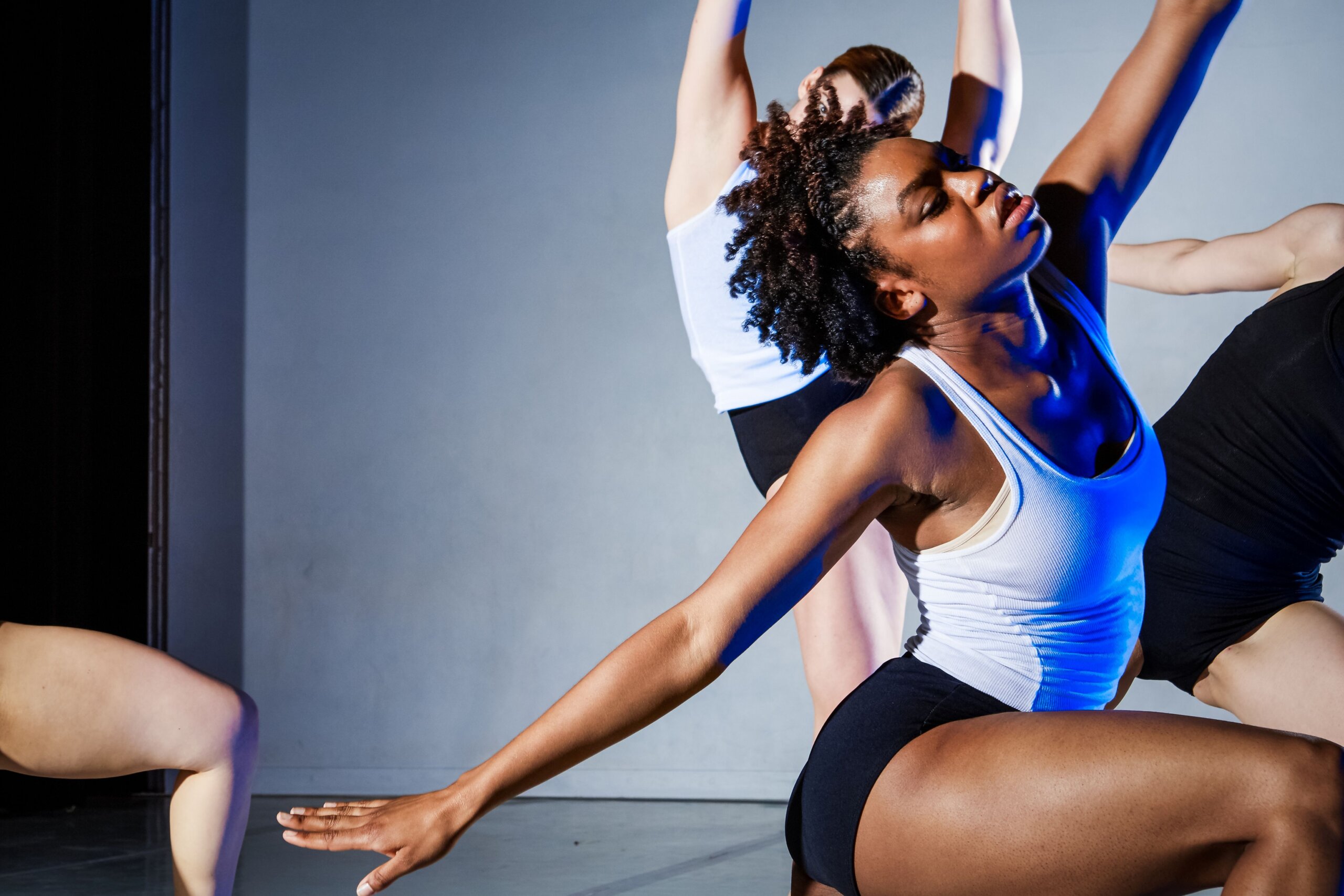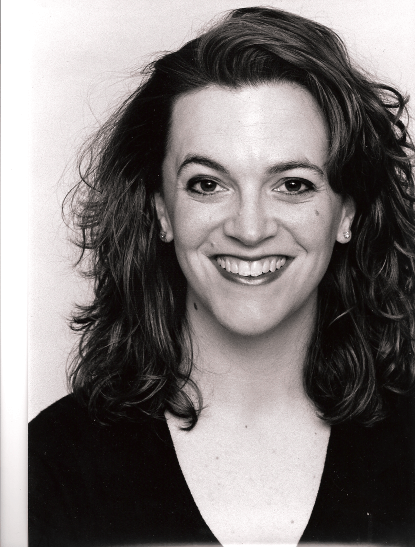
Dance
Online Courses
Rutgers Arts Online offers online courses on your schedule. Our list of Dance courses are taught by working artists who are experts in their field.
Matriculated students may take Rutgers Arts Online courses.
Non-matriculated students may take courses by filling out the Rutgers Arts Online Application.
Available Courses
07:203:131 Dance Appreciation Online
Dance Appreciation Online
Course Number: 07:203:131
Course Format: Lecture
Mode of Instruction: Online Asynchronous
Dance Appreciation Online is an introduction to dance as an art form, wherein students study the historical, cultural, social and performative contexts of diverse dance forms. Students engage with aesthetic, theoretical, and scholarly discourses aimed at illuminating how dance functions as a form of communication and personal, aesthetic expression. In addition, students explore the ways in which dance both reflects and comments upon contemporary society. Students develop fundamental dance literacy through critical analysis of dance in live and recorded formats; identify aesthetic concepts and ideas through written and visual media; demonstrate comprehension in their utilization of dance vocabulary and terminology; discuss influential choreographers and genres of dance; and articulate critical conclusions about the reciprocal relationship between dance, the arts and societal concerns.
3 credits
Course Prerequisites and Corequisites: None
Learning Goals of Course
Course Learning Objectives:
- To develop the ability to perceive, analyze, describe, discuss, and understand dance as an art form across cultures and forms.
- To identify and discuss the social, cultural, and historical contexts of diverse dance forms.
- To define and describe the elements of dance composition.
- To demonstrate knowledge of influential choreographers and eras of dance.
- To articulate dance terminology and aesthetic concepts through both written and kinesthetic formats.
- To refine critical analytical skills through viewing dance in live and recorded formats and presenting ideas in written and visual media.
Policies for Exams, Assignments, Attendance, and Grading
Course Lecture Content: You must prepare the online lecture content for every course. This is your means of "attending" the course and your best opportunity for achieving the course learning goals.
Reading: Moderate - In order to complete the assessment components of the course, including threaded discussions, writing assignments, exams and the final project, you need to complete all assigned readings each week.
Videos: Heavy - Material from the videos will be included in the exams. It is essential that you watch all videos from start to finish, for exam content and for ideas for building your final project. You will not be able to successfully complete this course if you do not complete all video viewing.
Assignments and activities for the course (1000 points). For each assignment, check the Rubric in your ASSIGNMENT DUE DATES & RUBRICS Module for detailed grading criteria.
- “I Understand” Quiz: Checks understanding of course logistics and expectations. Details in course content. (40 points)
- "Your Move" (Introduction): You get 30 points for introducing yourself to the class!
- "Your Move" (Threaded Discussions): There are 3 "Your Move" discussion assignments. (30 points each)
- Quick Quizzes: There are 4 quick quizzes to check for content knowledge. (50 points each)
- Dance Video Analysis: There are 2 dance video analysis assignments. (The first is worth 50 points; the second is worth 100 points.)
- Cultural Response Assignments: There are 2 cultural response assignments. (100 points each)
- Respondus Set Up for Exam 1 (30 points)
- Exams: 2 Multiple Choice Exams (130 points each)
Instructors: Darrah Carr, dacarr@mgsa.rutgers.edu; Kathleen Flynn Gavin, katfly@mgsa.rutgers.edu; Stephen O'Connell, soconnell@mgsa.rutgers.edu
STUDENTS MAY NOT RECEIVE CREDIT FOR BOTH DANCE APPRECIATION ONLINE 07:203:131 AND DANCE APPRECIATION 07:203:101
07:203:132 History of Broadway Dance Online
History of Broadway Dance Online
Course Number: 07:203:132
Course Format: Lecture
Mode of Instruction: Online Asynchronous
Explores the evolution of dance in musical theater and on Broadway. Course topics will include a historical survey of dance on Broadway; an examination of the reciprocal relationship of Broadway dance to economic and cultural change; and a close look at the power structure and organization of Broadway musicals. The evolution of Broadway dance steps and styles and the contribution of notable dancers will be examined.
3 credits
Course Prerequisites and Corequisites: None
Learning Goals of Course
By the end of the course, students will be able to:
- Organize Broadway dance and musical theatre on a timeline of relevant historical and economic issues.
- Compare Broadway dances across decades to understand the evolution of Broadway dance through history.
- Understand the reciprocal relationship of culture and the arts, specifically culture and dance.
- Recognize notable Broadway choreographers and be able to evaluate each choreographer’s specific contributions to Broadway dance and musical theatre history.
- Analyze Broadway dance choreography to differentiate historical, cultural and artistic components.
- View, evaluate and critique Broadway dance using formalistic/artistic properties and from the perspective of an informed audience.
- Articulate written evaluations and critiques of Broadway dance using domain specific language.
Policies for Exams, Assignments, Attendance, and Grading
Assignments (Total of 900 points):
- “I Understand” Word Doc Submission – 40 points
- Class Discussion (5) – 150 points (30 points each)
- Journal Entries (3) – 90 points (30 points each)
- Dance Video Analysis – Form (2) – 80 points (40 per assignment)
- Broadway Dance Video Analysis (3) – 150 points (50 per assignment)
- Written Responses (6) – 240 (40 points each)
- Includes 2 “Get Up and Dance” options to replace Written Responses.
- Peer Review of Final Presentation – 30 points
- Broadway Analysis Presentation – Rough Draft – 20 points
- Broadway Analysis Final Presentation – 100 points
Instructor: Andrew Greenspan, ag1224@mgsa.rutgers.edu
STUDENTS MAY NOT RECEIVE CREDIT FOR BOTH HISTORY OF BROADWAY ONLINE 07:203:132 AND HISTORY OF BROADWAY DANCE 07:203:102. BFA AND BA MAJORS MAY TAKE THIS COURSE FOR ELECTIVE CREDIT ONLY
07:206:326 Adaptive Movement through Dance Online
Adaptive Movement through Dance Online
Course Number: 07:206:326
Course Format: Lecture
Mode of Instruction: Online Asynchronous
Adaptive Movement Through Dance is a reciprocal dance studies course that introduces how to teach modified movement techniques to stimulate cognitive mobile functioning for people with movement disabilities and special populations. The course is an online course training students how to use various types of movement methods in dance. These include ballet, modern, jazz, tap, ballroom, musical theater choreography, and the Brain Dance to create a series of rhythmic patterns. These patterns offer flow and consistency to enhance weight shifting and transitional steps to promote a progression of skills. Within these styles of activity, rhythmic patterns for organizing body half, homologous, and cross-lateral patterning; a variety of efforts, flexibility, strengthening, and stretching modes of movement will be introduced. Dance pedagogy will be deconstructed and then applied to the physical and mental capabilities of the specified group. Total body integration methods such as Bartenieff Fundamentals, Alexander Technique, Feldenkrais Method, Yoga, and other forms of kinesthetic learning will be introduced. Populations with a variety of both congenital and acquired disabilities will be discussed to summarize their specific needs for having access to an appropriate adaptive movement class and outline the benefits of dance and how to apply these benefits.
Lectures will be recorded to be viewed and listened to. Recorded video labs will include demonstrations of exercises for viewing and practice. Video submissions will be recorded by the students to show their practice and to share with fellow students. Weekly written summaries of reading assignments, video submissions, final papers and a final recorded projects will be the graded requirements for this course.
3 credit(s)
Learning Goals of Course:
Upon completing this course, students will possess the knowledge and skills to:
- Understand why adaptive movement practices such as dance and movement exercises are useful coping mechanisms for people who have congenital conditions or have been diagnosed with a debilitating and life-changing disease or disorder that takes away independence due to mobility issues.
- Develop an understanding about populations who have movement limitations to provide alternative forms of non-clinical care and recognize methods that promote supportive and motivational teaching environments based in various dance techniques that is mentally, physically, and socially stimulating using dance movement practices.
- Understand how to structure and choreograph sequences for an adaptive movement class.
- Develop an understanding of somatics and sensorimotor learning techniques and practices that support breath, flexibility and balance such as Alexander Technique, Feldenkrais Method, Bonnie Bainbridge Cohen, Bartenieff Fundamentals, and Yoga.
- Research the Adaptive Model Theory (AMT) to understand the theories of adaptive movement properties and coordinated sensorimotor alternatives and apply them to the elements of a dance movement class created by the student.
Instructor: Natalie Schultz-Kahwaty, ns1199@mgsa.rutgers.edu
07:206:410 Neuroscience & Dance Online
Neuroscience & Dance Online
Course Number: 07:206:410
Course Format: Lecture
Mode of Instruction: Online Asynchronous
Neuroscience in Partnership with Dance will explore how many regions of the brain are affected by dance. The four main regions of the brain will be presented and deconstructed to understand how they function and control the nervous system within the body. Students will explore how rhythmic and patterned sequences of dance movement can create new connections within the brain. Thoughtful investigation over these connections allows the learner to articulate how rhythmical music selections of various types accompanying dance sessions can support many populations with dance-related therapeutic treatments. Students will learn about the growing field of dance and neuroscience and new applications of these methods will be researched in terms of art therapies that breakdown how movement is executed while encouraging expression as an outlet through dance. Students will learn and understand how to experience and apply conscious movement practices based in Anne Green Gilbert’s Brain Dance for themselves and the importance of this instruction. Students will work to develop a final project that showcases mind and body connections articulated by movement and dance.
3 credit(s)
Course Prerequisites and Corequisites: None
Learning Goals of Course:
Upon completion of this course, students will possess the knowledge and skills to:
- Identify the fundamental parts of the brain, how they function and relate to movement.
- Develop a foundational understanding about disabilities (impairment of the body/mind; activity limitation; participation restrictions) and their effects over a person’s quality of life.
- Understand how rhythmical movement practices can influence the plasticity of brain and possibly create new neural pathways and connections.
- Explore how dance stimulates neurological functions of the brain to help improve movement that could benefit from dance and music guided reintegration.
- Research cognitive dance therapies that can be used to train the brain to function more efficiently after the diagnosis of a neurological disorders, congenital or acquired disabilities.
Instructor: Natalie Schultz-Kahwaty, ns1199@mgsa.rutgers.edu
**07:206:431 Dance History: World Survey Online
Dance History: World Survey Online
Course Number: 07:206:431
Course Format: Lecture
Mode of Instruction: Online Asynchronous
In order to understand the history of dance, we must first ask–why do we dance? While dancing is a universal human activity, it does not play the same role in every culture. 07:206:431 examines the many functions of dance around the world and throughout history. The independent, triangular relationship between a given dance’s function, form and context will be revealed through an analysis of original source readings and selected videos. Weekly discussion board posting and blog entries will provide opportunity for reflection on the broad range of concerts that affect dance’s place and purpose in different societies.
3 credits
Course Prerequisites and Corequisites: None
Learning Goals of Course:
Course Goals
Through this course students will:
- Broaden their knowledge of the distinct historical formations of dance practices across various continental areas;
- Comprehend vital terminology associated with these different dance forms.
Learning Objectives
This course aims for students to:
- Openly discuss and engage in questions about dance tradition, as a form of historical innovation, with a set of aesthetic roots in social environment.
- Think collaboratively in outlining the regional contexts assigned to dance styles, and in considering how these forms have circulated outside their continental territory.
- Write analytically about how particular dance forms have emerged out of historical processes, or have continued to transform alongside the restrictions or possibilities of social dynamics.
- Work methodically toward completing a well-written grant proposal in the arts and humanities.
Learning Outcomes
As a result of participating in this course, students will:
- Examine how dance forms emerge from specific relationships with land, and/or through the terms of colonial histories.
- Build the capacity to link dance performance to social dynamics rooted in ceremony, ritual, and communal practices.
- Develop awareness of how dance styles have formed in ways that bolster the construction of individual and collective identities.
- Thoroughly comprehend how social categories such as gender, sexuality, and race have historically influenced the making of dance forms.
- Think critically about how dance practices emerge within and outside the territorial fixations of continent, country, and/or nation.
- Effectively write and orally present on goals and objectives of their grant writing proposal.
Instructors:
Alessandra Lebea Williams, alessandra.williams@rutgers.edu
Jeffrey Friedman, jfdance@mgsa.rutgers.edu
DANCE APPRECIATION ONLINE IS A PRE-REQ FOR NON DANCE MAJORS.
**07:206:432 Dance History: 1900 to the Present Online
Dance History: 1900 to the Present Online
Course Number: 07:206:432
Course Format: Lecture
Mode of Instruction: Online Asynchronous
This course provides an overview of the development of ballet, modern, and contemporary dance practice throughout the 20th and 21st centuries. Original source readings will describe the dance field’s major figures and movement theories, while videos will introduce the work of selected choreographers. The interdependent relationship between dance and society will be revealed through the analysis of dance works within their social, cultural, historical, and political contexts. Reading, video, and movement discussion board postings and Blog presentations will provide opportunity for reflection on the broad range of concerns that inform an individual choreographer’s work. There will be six quizzes and students will write two long essays.
3 credits
Course Prerequisites and Corequisites: None
Learning Goals of Course
Course Goals
Through this course, students will examine:
- 21st-Century Challenges
- Analyze the degree to which forms of human difference shape a person’s experiences of and perspectives on the world.
- Social Science and History
- Understand the bases & development of human and societal endeavors across time and place.
- Identify and critically assess ethical issues in social science and history.
- Historical Analysis
- Explain the development of some aspect of a society or culture over time, including the history of ideas.
- Arts and the Humanities
- Examine critically philosophical and other theoretical issues concerning the nature of reality, human experience, knowledge, value and/or cultural production.
- Analyze arts and/or literatures in themselves and in relation to specific histories, values languages, cultures, and technologies.Engage critically in the process of creative expression.
Course Objectives
Through the successful completion of this course, students will be able:
- To describe, comprehend, and analyze historical movements and philosophical ideas in the development of modern and contemporary dance practice throughout the 20th and 21st centuries.
- To critically analyze writings about, as well as dance works and practices drawn from, a wide variety of choreographers.
- To be knowledgeable of specific dance genres and the appropriate dance terminology used to describe them.
- To view and then be able to critique diverse dance works with effective writing skills.
- To conduct research using multiple information sources. To integrate sources effectively & ethically using proper citation.
- To place practice in social and historical context.
Policies for Exams, Assignments, Attendance, and Grading
- Grading Policies/Course Requirements: Incomplete assignments average into the summative grade as a zero. BFA Dance Majors may also be placed on artistic probation for receiving a grade of C or less in a Dance Department course required for completion of their degree.
- Requirements:
- Reading/Viewing Responses and Discussion Posts (9 x 4 points each) 36 points
- Office Hour Meeting with Instructor, 3 points
- Preliminary Video Submission, 6 points
- Peer Response, 6 points
- Analysis Paper
- Peer Review of Analysis Paper, 2 points
- Analysis Paper, 10 points
- Making Dance History Accessible Symposium
- Peer Review of Final Blog, 2 points
- Final Blog, 19 points
- Rough-cut Social Media Video, 2 points
- Final Video, 10 points
- Final Evaluation, 4 points
- Total Points: 100 points
Instructors:
Alessandra Lebea Williams, alessandra.williams@rutgers.edu
Jeffrey Friedman, jfdance@mgsa.rutgers.edu
**Note: Dance History: World Survey and 1900 to the Present Online are only available to BFA and BA Dance majors.






